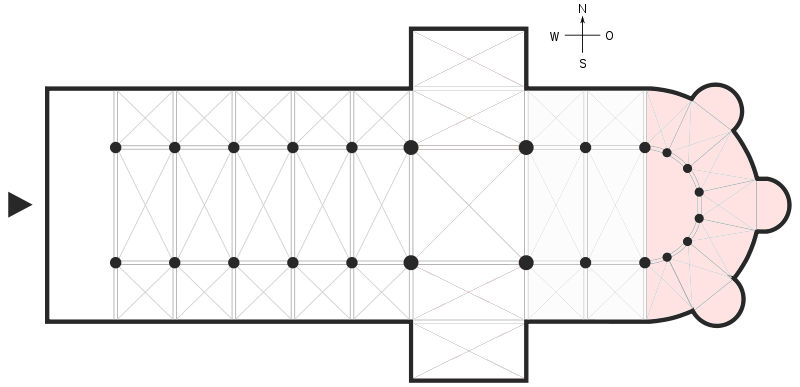An apse is a semicircular or polygonal termination of the chancelPart of a church containing the altar, used by the officiating clergy., the area for the exclusive use of the clergy, typically situated at the eastern end of a Christian church. A similar structure was a common feature of Roman public buildings,[1] and was introduced into England by St Augustine’s mission of 596, sent to Britain by Pope Gregory the Great to convert the Anglo-Saxons to Christianity.[2]
In medieval times the apse would have contained seats for the bishop and the presbyters behind the altar, separating the clergy from the congregation seated in the naveCentral part of a church, used by the laiety..[1] Over time the altar was moved to the back of the apse, and the clergy sat to the sides.
The term apse is derived from the Latin word apsis, or absis, meaning a wheel, arch, or vault. It is also used in astronomy to denote the points in a planet’s orbit furthest and nearest to the body around which it moves, which are called the apses, or apsides.[3]


